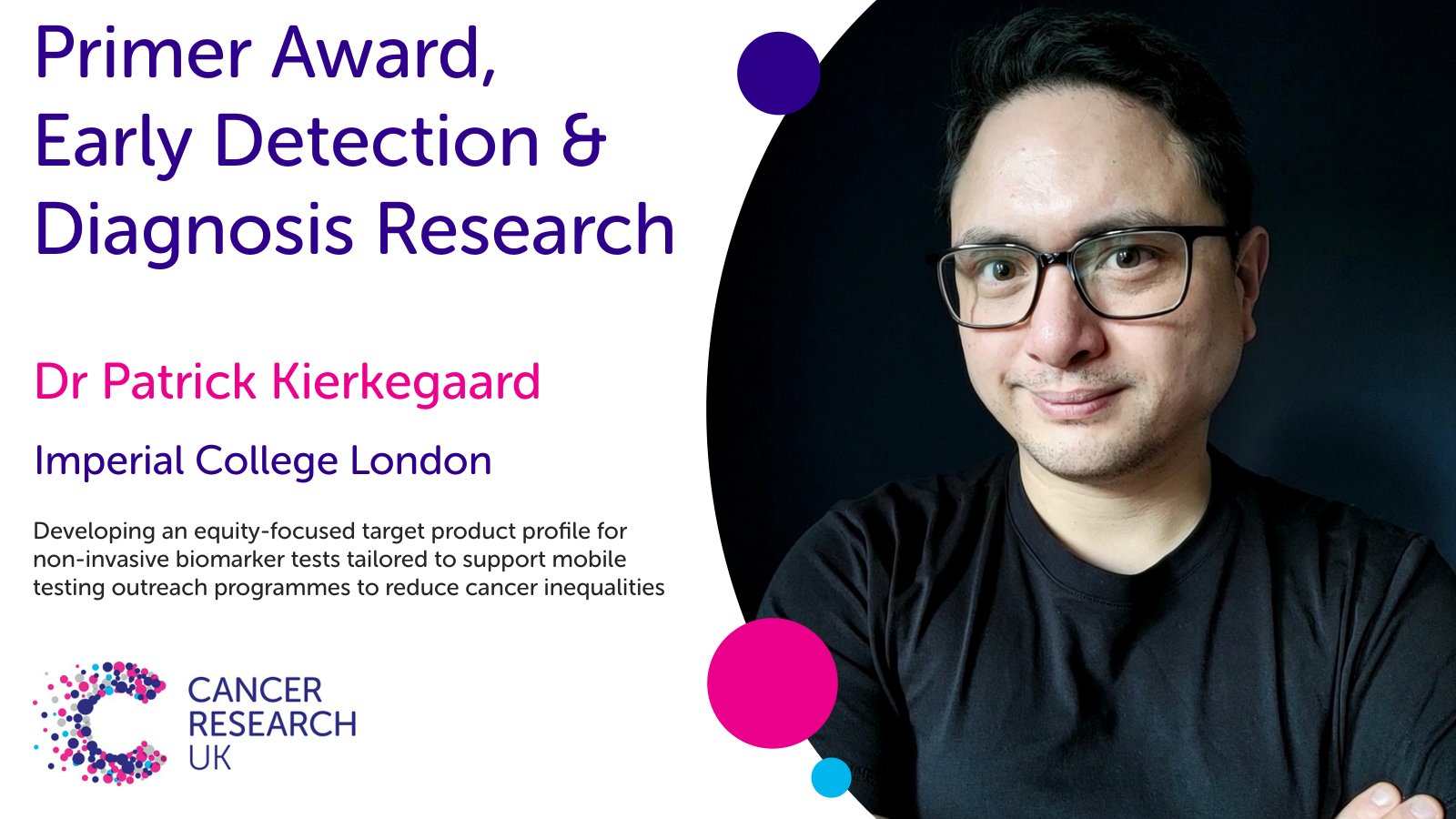
Dr Patrick Kierkegaard is a Human Factors & Implementation Science researchers at the CRUK Convergence Science Centre and at the NIHR-London IVD.
"Minority groups, whether it be because of their socio-economic, ethnic, religious, cultural, marginalised or rural backgrounds, face the greatest risk of poor cancer outcomes. Even though early detection testing could mitigate this disadvantage, these populations are also less likely to seek testing or participate in screening programs. The key barriers underpinning these behaviours include emotional distress, distrust of the healthcare system, and poor access to testing facilities. To overcome these obstacles, innovative approaches are required, such as the use of novel non-invasive tests that can be administered through mobile testing clinics. Non-invasive biomarker tests can identify cancer in breath, urine, blood, stool, or saliva specimens, making it quick, more acceptable and convenient to the patients. Mobile testing clinics greatly improve the reach, access, convenience, and overall experience of cancer testing. Combined, they offer a strong means to reduce inequalities for minority groups in early cancer detection. However, profound gaps remain in the design and effective delivery of these testing programmes."
To address this, Dr Kierkegaard and a team of cross-institutional researchers and clinicians at Imperial College London, the Royal Marsden Hospital and Queen Mary will develop an equity-focused Target Product Profile for non-invasive biomarkers designed for use in mobile testing clinics. This will highlight critical evidence requirements needed to develop these tests to support early detection outreach programs among hard-to-reach-populations.
